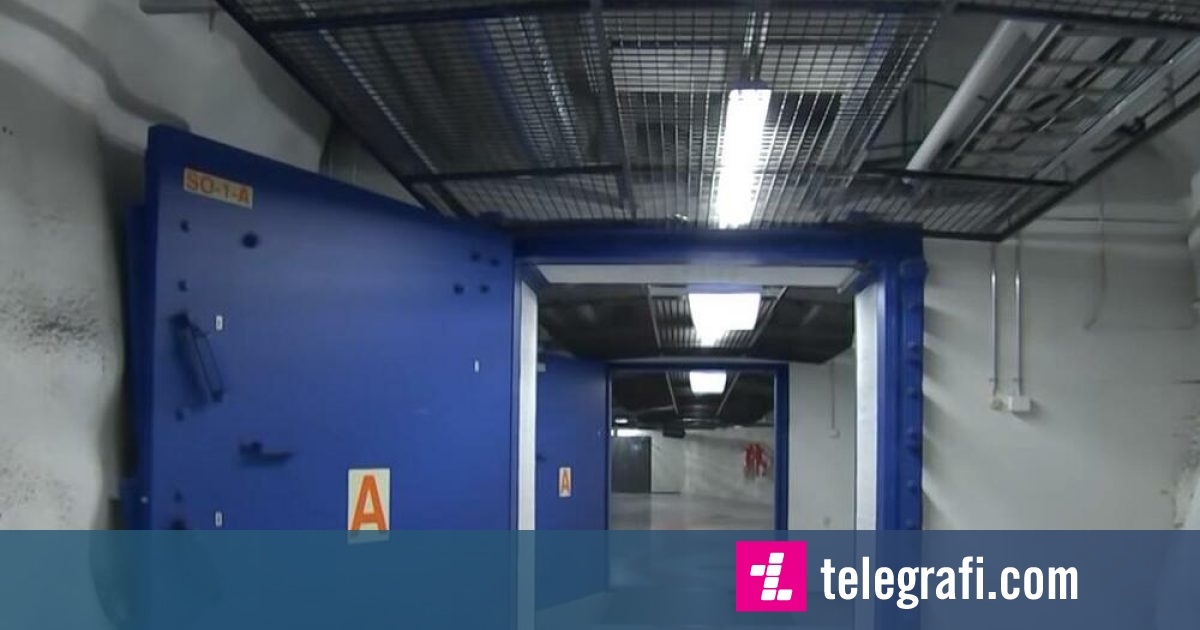After the Cold War, underground bunker networks in Europe began to collapse, but not in Scandinavia where young people are being built.
The Cold War is over, and European governments no longer consider bunkers a priority.
They ruled out the possibility of a nuclear attack and thus relaxed a bit, Telegrafi reports.
But in 2014, Russia invaded Crimea and it was a call to "wake up" and activate powerful European states.
Sweden's civil service spokesman Uve Brunstrom even said that they realized they were naive.
In 2014, Sweden was rapidly activated to prepare and modernize its underground network of bunkers.
According to estimates by the competent authorities, in this Scandinavian country there are currently 65 to 70 thousand bunkers ready to accommodate 80 percent of the population of Sweden (about 10 million).
The situation is similar in Finland, which has a network of about 55,000 underground bunkers that have sufficient capacity to house the entire population (about 5.5 million).
The two countries announced in recent days that they would join NATO, despite warnings from Russia not to do so.
Although Russian President Vladimir Putin has said that these countries are not threatened by anyone, the Scandinavians think that there is still a threat.
As long as there is peace, the bunkers serve as cinemas, nightclubs, churches, museums and sports fields.
When the government gives the order, in a period of 72 hours they can be turned into bunkers.
Determined to prepare and educate its residents in time, Sweden in 2018 sent 20 sheets of documents to the addresses of the private homes of its citizens, advising them on how to act in the event of an explosion. war - how to prepare food, use weapons, distinguish true from false…
"If there is a crisis or war, those documents are designed as additional education for our citizens.
Sweden is safer than many other countries - but there is always the potential for threat and we must respond.
"If you are prepared, then it is easier to act," a spokesman for the Swedish government told the Guardian.
"Civil protection and defense in general are part of our culture and solidarity," Rosana Farobel, a professor specializing in the Cold War at the Danish University of Aarhus, told Foreign Policy.
"We have a tradition of preparation… You always have to be ready and have options," Charlie Salonius Pasternak, a researcher at the Institute for International Relations in Helsinki, told ABC News.
The Swedish government has developed an application that allows them to see where the nearest shelters are located.
In addition to modernizing old bunkers - they are also building new ones, as citizens who do not like the idea that 20 to 30 percent of the population does not have access to shelters are looking for such a thing.
On the other hand, the Finns are prepared - enough that a country should be ready for nuclear war - Helsinki for this even holds the unofficial title "for the safest city in the world".
Beneath the Finnish metropolis are 5,500 underground bunkers and shelters, connected by a series of 330-kilometer-long tunnels.
They have enough space for 660 thousand inhabitants of Helsinki.
In every bunker of the big cities, at any moment there is enough food and water for 14 days, many of them are connected to the tunnels connected to the shops, the supply chains are secured according to the estimates of the state authorities and in them can live without any problems for whole months.
/ Telegraphy /
